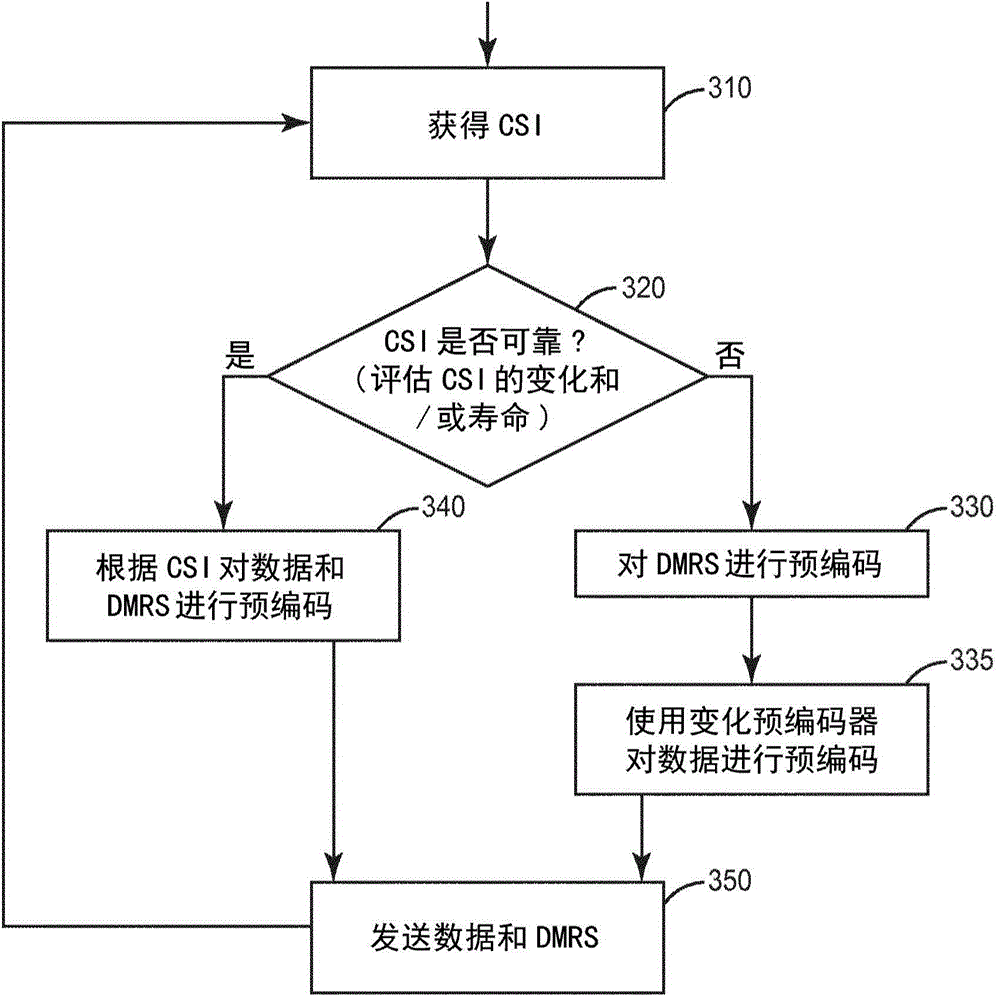Adaptive precoding based on channel state information reliability
A technology of channel state information and precoding, which is applied in the field of spatial precoding, and can solve problems such as the occasional problem of unreliable precoder information for a single mobile terminal
- Summary
- Abstract
- Description
- Claims
- Application Information
AI Technical Summary
Problems solved by technology
Method used
Image
Examples
Embodiment Construction
[0030] The invention is described more fully hereinafter with reference to the accompanying drawings, in which examples of embodiments of the invention are shown. This invention may, however, be embodied in different forms and should not be construed as limited to the specific embodiments set forth herein. It should also be noted that these embodiments are not mutually exclusive. Thus, it may be assumed that a component or feature from one embodiment is present in or used in another embodiment where such inclusion is appropriate.
[0031] For purposes of illustration and explanation only, the present invention is described herein in the context of operating in a radio access network (RAN) communicating with wireless terminals (also referred to as user equipment or "UE") over wireless communication channels These and other examples of . More specifically, it is described in the context of systems using the Long Term Evolution (LTE) technology, also known as the Evolved UMTS T...
PUM
 Login to View More
Login to View More Abstract
Description
Claims
Application Information
 Login to View More
Login to View More - R&D Engineer
- R&D Manager
- IP Professional
- Industry Leading Data Capabilities
- Powerful AI technology
- Patent DNA Extraction
Browse by: Latest US Patents, China's latest patents, Technical Efficacy Thesaurus, Application Domain, Technology Topic, Popular Technical Reports.
© 2024 PatSnap. All rights reserved.Legal|Privacy policy|Modern Slavery Act Transparency Statement|Sitemap|About US| Contact US: help@patsnap.com










